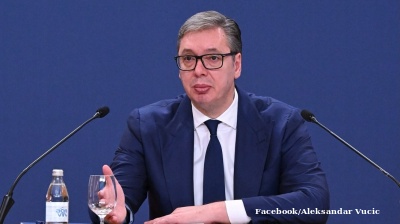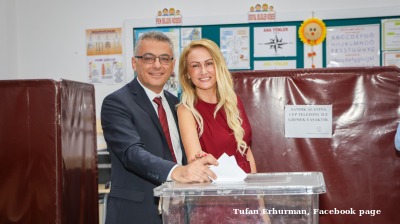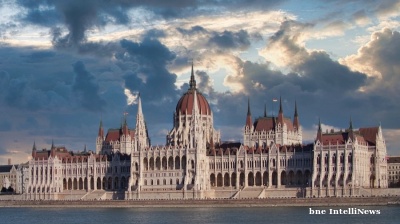Politics
Georgia saw significant political unrest during 2019, more visibly in the second half of the year after the June 20-21 incidents that included an attempted storming of parliament that was resisted very forcefully, even brutally, by the security forces. The drama outside the legislature, during which at least two protesters lost eyes after being hit by rubber bullets, set the scene for a series of anti-government protests.
Deviations from best democratic practices preceded the June incidents. The ruling Georgian Dream (GD) party (self-described as social democratic, but sometimes described as centre-right, and perhaps better seen as populist, "big tent" or ideologically amorphous) first got backs up by appointing members of the Supreme Court on lifetime tenures. Other divisive actions followed but public irritation was stirred to a much higher level by the aggression shown by riot police against the June 20-21 protesters. The next big controversy to incite opposition to GD was the party’s decision to break its promise of voting in a proportional representation electoral system prior to the general election due this year.

Tbilisi saw major anti-government protests in June-July and November-December last year (Credit: George Melashvili).
The opposition have gradually captured the opportunities caused by this string of controversies ahead of the 2020 poll. But opinion surveys indicate that while billionaire oligarch Bidzina Ivanishvili’s GD is losing ground with voters, the opposition remains fragmented. Thus the outcome of the parliamentary vote remains unpredictable.
In late November, the European Union’s outgoing High Representative for Foreign Affairs and Security Policy, Federica Mogherini, said in Strasbourg that “today we see the risk in the country [Georgia] of backsliding on some important reforms in the rule of law area”, Civil.ge reported.
Two months previously, surrounded by protesters bearing a yellow “Crime Scene” ribbon in Georgia’s parliament building, lawmakers endorsed outgoing interior minister Giorgi Gakharia as prime minister and his requested cabinet, with the move coming one week after the near silent resignation of predecessor Mamuka Bakhtadze.
Gakharia, “Moscow's man” or “Ivanishvili's last stooge” as described by a piece run by Deutsche Welle, or “Russian-educated former interior minister” as he was dubbed on a more neutral note by Reuters, earned more notoriety last year by orchestrating the violent June crackdown against anti-government protesters, many of them youths. Instead of dismissing him, Ivanishvili, who is so often depicted as Georgia’s de facto ruler, appointed him to form a new, stronger government and secure another term in office for his Georgian Dream. Dismissing Gakharia would very likely have been interpreted as a sign of weakness—something Ivanishvili cannot afford one year before the poll.
Georgia (green) vs Central Asia & Caucasus, GDP growth. Source: World Economic Outlook, IMF DataMapper.
Economy, business & finance
Growth has remained robust in Georgia, but the Georgian lari (GEL) has been under pressure despite a certain improvement in the external balance (it remains sustainable) and robust foreign direct investment that finances it. Georgia’s GDP growth accelerated to 5.7% in the third quarter of 2019, up from 4.5% y/y in Q2 and 4.7% y/y in Q1. Average growth for the first three quarters of the year was 5.0%, compared to 4.8% in the same period of 2018. The government’s fiscal policy is run according to envisaged 2019 growth of 4.5%, with officials having revised down their earlier projection of 5%.
That’s broadly in line with the expectations of the international financial institutions (IFIs). The World Bank now expects Georgia to record growth of 4.3% in 2020, it said in the latest edition of its Global Economic Prospects report issued on January 9. In the previous edition of the report, issued in June last year, it anticipated a GDP expansion of 4.8%. The institution estimated that in 2019 growth in Georgia stood at 5.2%, an increase of 0.6 percentage points on what it anticipated six months ago.
Georgia’s volume of FDI, expressed as a percentage of GDP, is indeed impressive even though it has shrunk compared to recent years. However, its structure is dominated by the re-invested earnings of the country’s two major banks. That gives rise to concerns about how many genuine “greenfield” or “brownfield” foreign investors there are that are ready to develop projects in the country.
A good indicator when it comes to gauging how attractive or otherwise the country is to such investors is the project at Anaklia on the Black Sea coast to build a deep water port. It was to be developed by the Anaklia Development Consortium (ADC) in partnership with the government. But the ADC failed to come up with a strategic investor and the capital contributions needed to go forward with the project and the government decided to scrap the public private partnership contract signed in 2016 that underpinned it.
Foreign direct investment (FDI) in Georgia increased by 13.7% y/y to $417mn in the third quarter of this year against a trend that was generally downwards. There was a 16.9% y/y decline to $909mn in the first three quarters. FDI in Georgia contracted in 2018 by 35% y/y but remained strong at 7.5% of GDP. The decline continued in the first two quarters of last year. The main reasons for that included the completion of a pipeline project, the transferring of the ownership in some companies from non-resident to resident units and a reduction in liabilities to non-resident direct investors, national statistics body Geostat said.
The exchange rate seems to be the most visible issue for Georgia’s economy right now, but the fundamentals show that there are in fact not so many grounds for concern. Lasha Kavtaradze, an economist at investment bank Galt & Taggart, in December estimated that the Georgian lari was undervalued by some 10% and that this resulted in 2.2 pp of November’s inflation. The situation with inflation in Georgia—standing at 7% y/y as of November (steady in December) —may not have justified the sharp monetary tightening brought in by the central bank, which is hurting the outlook for growth that has so far exceeded expectations, he argued.
According to Kavtaradze, economic growth was higher than expected last year and was expected to remain within the range of 4%-5% in November. Nonetheless, the growth outlook has deteriorated. The economist directly attributed this to the significant monetary policy tightening.
Georgia’s central bank has pared risks posed by excessive lending and the financial system is now on a more stable footing. However, a high level of dollarisation and excessive debt faced by households remain vulnerabilities in the country’s financial system and constrain the national lender’s monetary and exchange rate policies, according to a report from the Berlin Economics think tank. The report also highlighted the ongoing enactment of institutional improvements in Georgia’s banking and capital markets.
Berlin Economics also drew attention to the highly concentrated banking system, with just two banks controlling 73% of sector assets. In principle, such a concentration may undermine incentives for sound risk management. Dollarisation and households’ high indebtedness were the main risks to Georgia’s financial system agreed the think tank. Georgia’s banking sector is seen as having expanded rapidly and as highly profitable, meaning it is highly capitalised—but a low level of bad loans is typical for banking at this stage of development and potential problems with credit quality will only surface later, the think tank cautioned.
Berlin Economics also pointed to a recent expansion of bank credit that resulted in credit to the real sector (65% of GDP) exceeding levels seen in Central and Eastern Europe. The situation forced the central bank to enforce a "responsible regulation act" in January.
In December, a bill for the 2020 state budget was passed. Under the bill, total expenditures were set at GEL14.4bn ($4.96bn). Tax incomes are projected at GEL10.5bn ($3.60bn) while total budget revenues are expected at GEL13.2bn ($4.54bn). The deficit, at nearly 2.4% of GDP, will be covered by borrowing and to a small extent by GEL47mn ($16.2mn) of grants.
Good news for Georgia in terms of remittances came in late July when it was announced that a law allowing residents of Georgia to be employed legally in Germany would go into force in six to seven months.
Back home, Georgia’s ‘blue sky’ business environment saw dark clouds as a list was issued of companies said to have been damaged or bankrupted by targeted actions conducted by Georgian state entities. Published by Fady Asly, chairman of the country’s International Chamber of Commerce (ICC), as reported by InterPressNews (IPN), it was said by the ICC to represent the “tip of an iceberg”. Names on the list include Philip Morris, British American Tobacco, American Georgian Alloys, Terabank, KazTransGas, InterRao, City Park, Batumi Port, Optical Systems Inc, Samih Habib Investments, Caucasus I Fund and Anka Food Switzerland.
Georgia’s banking industry is closely following the fate of co-founder and former board chairman of Georgia’s TBC Bank Mamuka Khazaradze and fellow co-founder and former deputy chairman Badri Japaridze who are being investigated for money laundering that allegedly took place 12 years ago. Khazaradze has shown some political ambitions, having launched a movement in August. “We also want to inform the [relevant] services of friendly countries that in our country, Georgia, the state services are being used as tools for political persecution today,” Japaridze said in late August as he claimed that Georgian authorities had attempted to “block” the “legal finances” held by the TBC Bank co-founders in the UK. Khazaradze challenged Ivanishvili, whom he claimed was at the origins of the prosecution, to hold TV debates and openly discuss the case of the Anaklia deep sea port investment project that has been derailed by what its proponents claim are suspicious moves that might aid a competitor at Poti, south of Anaklia on the Black Sea coast.
Georgia (green) vs Central Asia & Caucasus, Current account balance, % of GDP. Source: World Economic Outlook, IMF DataMapper.
Budget airline Ryanair announced five months ago that it was starting routes to Western Europe from two airports in Georgia, Tbilisi and Kutaisi. A little earlier, Wizz Air said it would launch direct flights from Georgia’s Kutaisi International Airport to 10 more European cities including Hamburg, Nice, Frankfurt, Venice and Heraklion.

National Geographic is publishing extensive materials on Georgia in a boost to its growing tourism industry. Pictured is the country's most visited ski destination, Gudauri, in the Greater Caucasus mountain range (Credit: Paata Liparteliani).
Foreign visitors on “gambling holidays” are a big revenue generator for Georgia and in October it was reported that gross revenues generated by the country’s gambling industry officially hit GE13.8bn (€5bn, and equivalent to one third of the country’s GDP) in 2018, more than double the sum recorded the year before. Independent estimates put actual turnover at GEL20bn, given that the companies involved in the sector are subject to mild supervision.
In the world of media, the new director-general of Georgia’s main private TV station Rustavi 2, Paata Salia, said in August that most of the broadcaster’s prominent journalists and producers were to be dismissed, raising concerns among some critics that a former opposition media outlet could be muzzled, Radio Free Europe reported.
Early November brought a report that Georgia is now the world’s third largest Bitcoin miner, behind China and Venezuela. The scale of the mining pursued by the small country’s cryptocurrency farms is such that it is “sucking the power grid dry” as the enterprises account for some 10% of the country’s electricity consumption some estimates contend, according to a BBC Business Daily podcast “A hydro-powered Bitcoin boom in Georgia”.
Energy developments in Georgia last year saw Kakha Kaladze, the mayor of Tbilisi and an influential member of the ruling Georgian Dream party, throw his support behind the $1bn Nenskra HPP hydropower project, while rejecting accusations related to the prospect of higher electricity prices. Environmental NGOs have resisted the development of the project. Georgia is developing the Nenskra plant under a build-operate-transfer (BOT) arrangement with private investor Korea Water Resources Corporation.
According to Kaladze, projects like Nenskra HPP are necessary to secure Georgia’s energy independence. He called on journalists to investigate sources of funding behind the non-governmental organisations that are against the construction of the plant. “Let us investigate whether Gazprom is one of the main sponsors [of the NGOs]," he said. International NGO Bankwatch said in a report on the project that “it will deprive the local community, ethnic Svans, of lands and livelihoods, but potential negative impacts have not been properly assessed”.
In April, police used tear gas and rubber bullets against Georgian locals protesting against construction works at the Khadori 3 hydropower plant in Pankisi Gorge, a Muslim enclave in Georgia’s Caucasus mountains.
Early January saw the Georgian Oil and Gas Corporation (GOGC), one of the largest state-owned enterprises in Georgia, announce that it plans to borrow €300mn in April by issuing bonds on the international financial market.
S&P Global Ratings in October raised its long-term foreign and local currency sovereign credit ratings on the Government of Georgia to BB while affirming the short-term ratings at B. The outlook was pegged at stable.
Latest news from Georgia, with 2020 well under way, includes parliament’s passing of a derivatives law and stats out of Geostat showing Georgia’s goods exports grew by 18.7% y/y and reached $390.4mn in December, while goods imports increased by 12.9% y/y to $927.0mn, thus the merchandise trade deficit in the month worsened by 8.9% compared to December 2018. Nevertheless, for the entire year of 2019, the deficit shrank by 8.5% y/y to $5.28bn with exports up 12.4% y/y to $3.77bn and imports down 0.8% y/y to $9.05bn.
Opinion

MARINS: Europe’s “fake it till you make it” war approach cannot hold off Russia’s trillion dollar war machine
In their speeches on the war in Ukraine, European leaders appear like a video clip looped on repeat. Standing before the cameras they declare new packages of support for Kyiv and threaten new measures to pressure Russia as if it was still 2022.

A year after the Novi Sad disaster, Belgrade faces one crisis after another
Serbia’s government is grappling with a convergence of crises which threaten to erode President Aleksandar Vucic’s once-dominant position.

Don’t be fooled, Northern Cyprus’ new president is no opponent of Erdogan, says academic
Turkey’s powers-that-be said to have anticipated that Tufan Erhurman will pose no major threat.

COMMENT: Hungary’s investment slump shows signs of bottoming, but EU tensions still cast a long shadow
Hungary’s economy has fallen behind its Central European peers in recent years, and the root of this underperformance lies in a sharp and protracted collapse in investment. But a possible change of government next year could change things.






